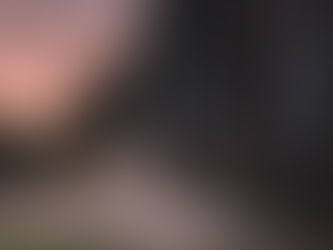
Soft Washing vs. Pressure Washing: The Best Approach for Cleaning Tennis Courts
Nov 6, 2024
3 min read
0
2
0

Tennis courts are a significant investment, offering hours of enjoyment, fitness, and competition. However, over time, they can accumulate dirt, algae, mould, and other debris that can make surfaces slippery and affect play quality. When it’s time for a deep clean, many people wonder which is the best method to restore their court to a pristine state: soft washing or pressure washing? Both approaches have benefits, but choosing the right one depends on the court’s surface and the cleaning goals.
In this blog post, we’ll dive into the key differences between soft washing and pressure washing, their pros and cons, and what each method offers for tennis court maintenance.
Understanding Soft Washing and Pressure Washing
Soft Washing is a low-pressure cleaning technique that uses special cleaning solutions to break down and remove organic material such as mould, mildew, algae, and bacteria. The process relies more on chemical treatment than water pressure, which makes it ideal for surfaces that may be easily damaged by high pressure.
Pressure Washing, on the other hand, uses high-pressure water to blast away dirt, grime, and contaminants. It’s effective for heavily soiled, durable surfaces, such as concrete and brick, that can withstand intense pressure.
Why Choose Soft Washing for Tennis Courts?
Tennis courts are typically constructed with surfaces that can be delicate or easily damaged by high-pressure water. Soft washing offers the following advantages:
Preservation of Court Surface: Tennis courts are often made with acrylic, clay, or synthetic surfaces that may degrade or crack under intense pressure. Soft washing’s gentle approach ensures that these materials aren’t damaged, maintaining the longevity of the court.
Effective Algae and Mould Removal: Tennis courts are prone to algae and mould growth, especially in humid or damp environments. Soft washing utilises specialised detergents that eliminate these organic materials at the root, reducing the likelihood of regrowth.
Enhanced Safety for Players: Algae and mould can create slippery spots on the court, posing safety risks. Soft washing thoroughly removes these hazards, enhancing traction and making the court safer for players.
Environmentally Friendly: With eco-friendly detergents, soft washing minimises chemical runoff. This makes it a sustainable option, especially in areas where chemical exposure to grass and surrounding plants is a concern.
When to Consider Pressure Washing
While soft washing is generally preferred for tennis courts, there are cases where pressure washing might be beneficial. However, it should only be considered if:
The Surface is Concrete: Concrete courts are more durable and may withstand the impact of pressure washing without sustaining damage. In such cases, pressure washing can quickly clear heavy stains and stubborn debris.
Deep Stains Need Removal: If the court has areas with ingrained dirt or stains that soft washing solutions cannot effectively handle, a light-pressure wash might be an option – but only on durable surfaces and at a lower PSI setting.
Comparing Results: Soft Washing vs. Pressure Washing
Feature | Soft Washing | Pressure Washing |
Surface Protection | Gentle on court surfaces | Risk of damage on delicate surfaces |
Effectiveness | Targets mould, algae, and organic buildup | Good for heavy, ingrained stains |
Safety | Safer for acrylic and synthetic surfaces | Suitable for durable, concrete surfaces only |
Eco-Friendliness | Uses biodegradable detergents | Primarily relies on water pressure |
Regrowth Prevention | Slows down algae and mould regrowth | Less effective at preventing regrowth |
Tips for Maintaining Your Tennis Court
Regular Soft Washing: Scheduling a professional soft wash at least once a year keeps the court clean and reduces build-up.
Spot Treatment: For stubborn stains or algae spots, consider periodic, localised soft washing rather than washing the entire court.
Clear Debris: Regularly sweep or blow off leaves, dirt, and other debris to prevent organic matter from accumulating and encouraging mould growth.
Consider Surface-Specific Products: Using products designed specifically for your court’s surface can help maintain its condition and prevent premature wear.
Final Thoughts
When it comes to tennis court maintenance, soft washing stands out as the preferred choice for most surface types. It provides a safe, effective, and environmentally friendly method for removing organic matter without risking damage to the court. Pressure washing, while powerful, is often best reserved for more durable surfaces like concrete, where high-pressure cleaning won’t compromise the integrity of the court.
To get the best results, consider consulting a professional who can assess the court’s surface type and condition and recommend the optimal cleaning approach. Investing in the right cleaning method not only keeps the court looking great but also ensures its longevity, enhancing the playing experience for years to come.





